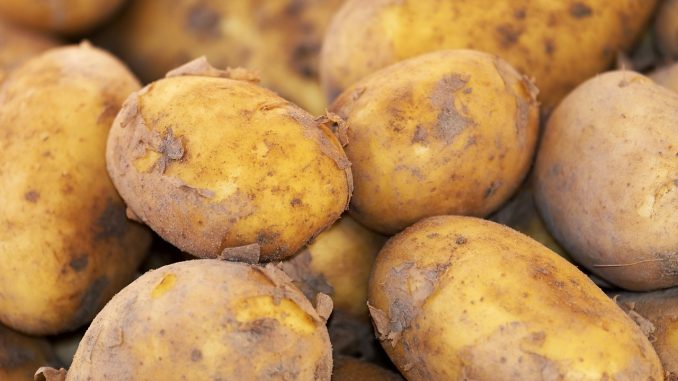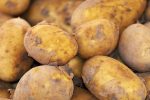
Potato breeding and variety development are crucial components of modern agriculture, playing a vital role in ensuring food security, addressing changing climatic conditions, and meeting the diverse needs of farmers and consumers. This comprehensive discussion will explore the key aspects of potato breeding, including the breeding objectives, methods employed, challenges faced, and the significance of variety development in the context of global agriculture.
1. Importance of Potato Breeding
Potatoes (Solanum tuberosum) are one of the world’s most important food crops, providing a significant source of calories and essential nutrients for millions of people. Potato breeding is essential to develop new varieties with improved traits, such as higher yields, resistance to diseases and pests, adaptation to diverse environmental conditions, and enhanced nutritional profiles. Breeding efforts also focus on traits related to processing and storage, as well as consumer preferences, ensuring that potatoes remain a versatile and valuable crop.
2. Breeding Objectives
a. Yield Improvement:
One of the primary objectives of potato breeding is to enhance yields. This involves developing varieties that produce more tubers per plant and optimizing the size and quality of the harvested potatoes. Improved yields contribute to increased food production and economic viability for farmers.
b. Disease and Pest Resistance:
Disease resistance is a critical focus in potato breeding due to the susceptibility of potatoes to various pathogens, including late blight, early blight, and viruses. Developing varieties with natural resistance or tolerance to these diseases reduces the reliance on chemical inputs and promotes sustainable farming practices.
c. Adaptation to Climate and Soil Conditions
Climate change and varying soil conditions present challenges for potato cultivation. Breeding programs aim to develop varieties that are resilient to climatic stress, such as drought or heat, and adaptable to different soil types. This adaptability ensures that potatoes can be cultivated in diverse geographic regions.
d. Quality Characteristics
Breeding efforts also target quality characteristics, including tuber shape, skin color, and flesh color. Varieties with desirable culinary attributes, such as texture and taste, are developed to meet consumer preferences and market demands. Vitamin C is a typical nutrient that is often a target especially in the skin where it is most prevalent.
e. Nutritional Enhancement
Improving the nutritional content of potatoes is a growing focus in breeding programs. Efforts to increase the levels of essential nutrients, such as vitamins and minerals, contribute to enhancing the nutritional value of potatoes as a staple food. .
3. Breeding Methods
Potato breeding employs various methods to achieve desired traits. These methods can be categorized into traditional and modern breeding approaches.
a. Traditional Breeding
Traditional breeding involves controlled pollination of selected parent plants to produce seeds. The seeds are then grown into plants, and the resulting offspring are evaluated for desired traits. This process is time-consuming and relies on the natural genetic variability within the potato species.
b. Hybridization
Hybridization involves crossing two different potato varieties to produce a hybrid with desirable traits from both parents. The goal is to combine the strengths of each parent, such as disease resistance or high yield, in the offspring.
c. Genetic Modification (GM)
Genetic modification involves the direct manipulation of an organism’s genes to introduce or enhance specific traits. While genetically modified potatoes exist, the acceptance of GM crops varies globally, with some regions expressing concerns about environmental impact and consumer safety.
d. Marker-Assisted Selection (MAS)
MAS is a modern breeding technique that involves using genetic markers linked to desired traits for selection purposes. This method accelerates the breeding process by allowing breeders to identify and select plants with the desired traits more efficiently.
e. Crispr-Cas9 Technology
Crispr-Cas9 technology enables precise and targeted gene editing. This tool has the potential to revolutionize potato breeding by allowing for specific modifications to the potato genome, such as introducing disease resistance or enhancing nutritional content.
4. Challenges in Potato Breeding
a. Disease Complexity
Potatoes face numerous diseases, and the pathogens responsible can evolve rapidly, making it challenging to develop long-lasting resistance. Breeders must continually adapt their efforts to stay ahead of emerging diseases.
b. Genetic Diversity
Limited genetic diversity within cultivated potato varieties poses challenges in breeding for specific traits. This constraint can hinder the development of varieties with resilience to changing environmental conditions.
c. Consumer Preferences
Meeting consumer preferences and market demands is a complex aspect of potato breeding. Varieties must not only exhibit desirable agronomic traits but also align with consumer expectations for taste, texture, and appearance.
d. Climate Change
Climate change introduces new challenges for potato cultivation, including shifts in temperature, precipitation patterns, and the emergence of new pests and diseases. Breeders must develop varieties that can adapt to these changing conditions.
e. Regulatory and Societal Concerns
The acceptance of genetically modified organisms (GMOs) varies globally, with regulatory and societal concerns influencing the adoption of certain breeding technologies. Navigating these concerns poses challenges for breeders seeking to utilize the full spectrum of available tools.
5. Global Significance of Potato Varieties
Potato varieties developed through breeding programs have a global impact on food security and economic development. Resilient and high-yielding varieties contribute to increased agricultural productivity, ensuring a stable food supply for growing populations. Moreover, varieties tailored to specific climates and regions empower farmers to cultivate potatoes in diverse environments, promoting agricultural sustainability.
6. Future Directions in Potato Breeding
a. Climate-Resilient Varieties
As climate change continues to impact agriculture, there is a growing focus on developing potato varieties that can withstand extreme weather conditions, including heat, drought, and flooding. Breeding for resilience is essential for maintaining stable potato production globally.
b. Nutritional Enhancement
Ongoing efforts are directed toward enhancing the nutritional content of potatoes to address nutritional deficiencies in certain populations. Breeding for increased levels of vitamins, minerals, and antioxidants contributes to the nutritional well-being of consumers.
c. Digital Agriculture and Data Analytics
The integration of digital agriculture and data analytics is becoming increasingly important in potato breeding. Advanced technologies, such as remote sensing and genomic data analysis, aid breeders in selecting plants with desired traits more efficiently.
d. Public-Private Collaborations
Collaborations between public research institutions and private seed companies play a vital role in advancing potato breeding. These partnerships facilitate the exchange of knowledge, resources, and expertise, accelerating the development and dissemination of improved potato varieties.
Potato breeding and variety development are integral components of sustainable agriculture, addressing the complex challenges of disease, climate change, and evolving consumer preferences. Through a combination of traditional and modern breeding methods, researchers and breeders strive to develop potato varieties with enhanced traits, ensuring the resilience and adaptability of this important global food crop. As technological advancements continue to shape the field of plant breeding, the future holds promise for even more precise and effective methods, contributing to the continued success and significance of potato cultivation worldwide.

Leave a Reply